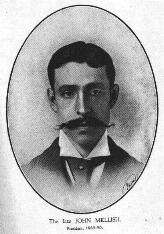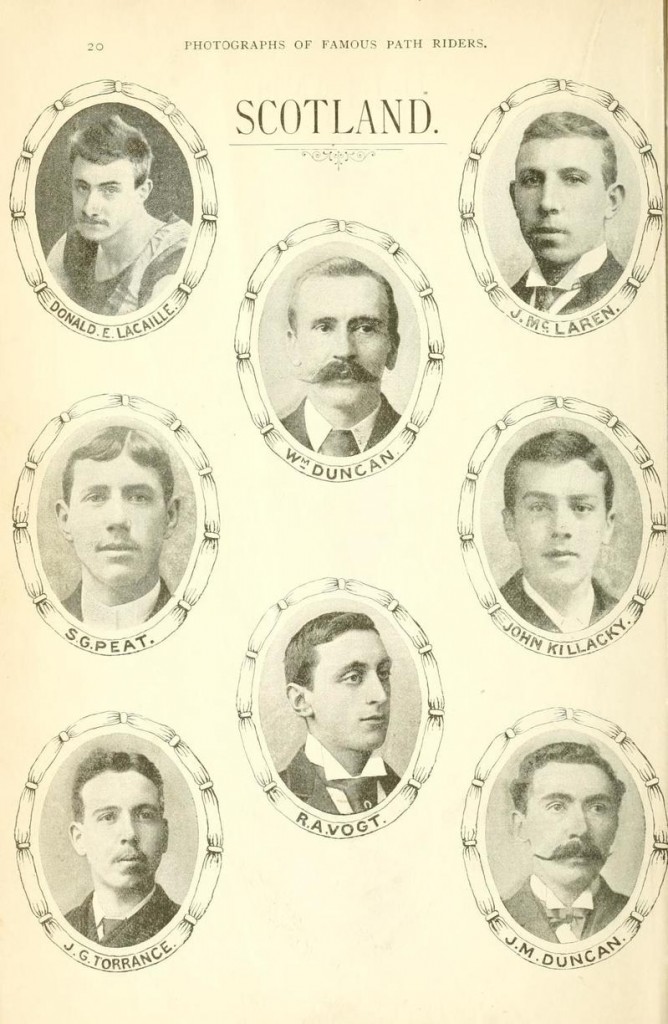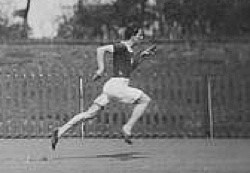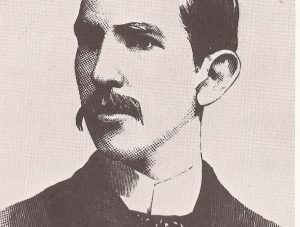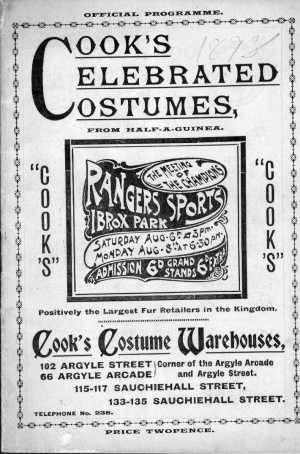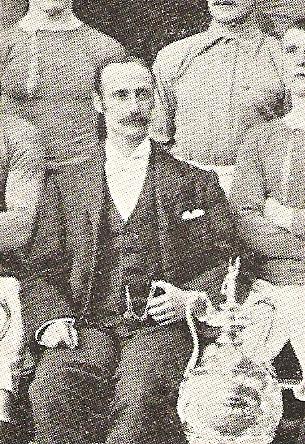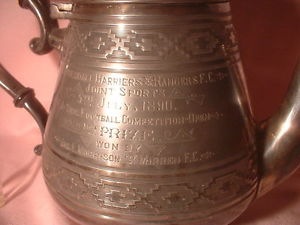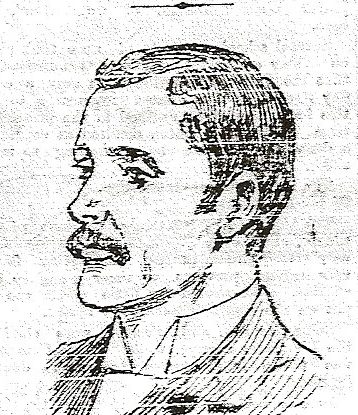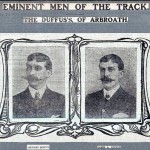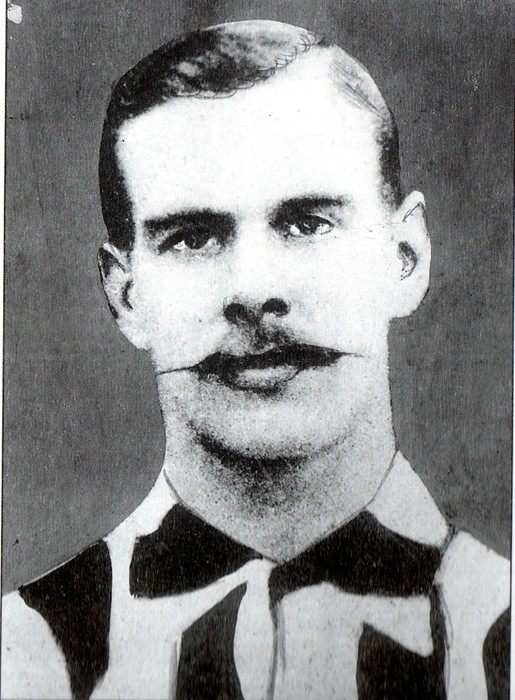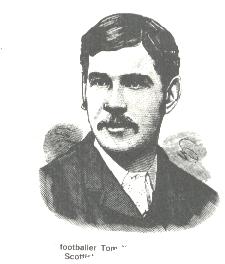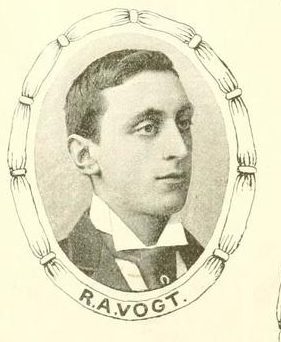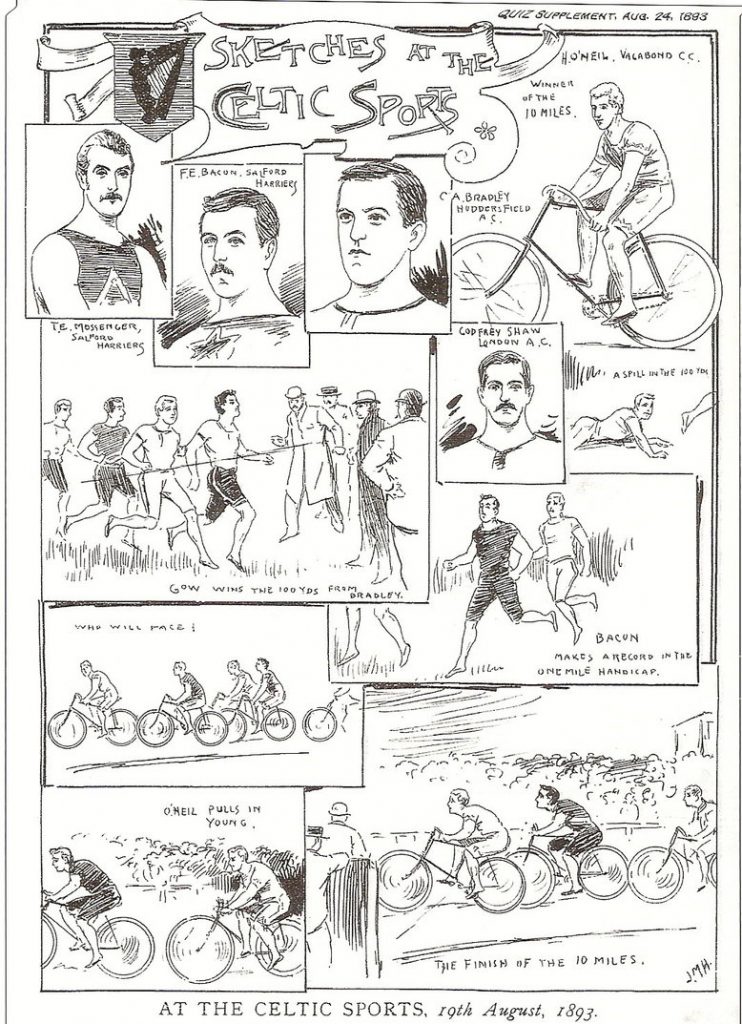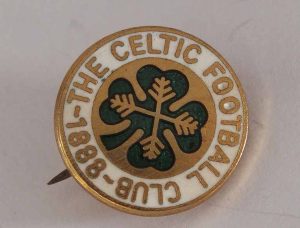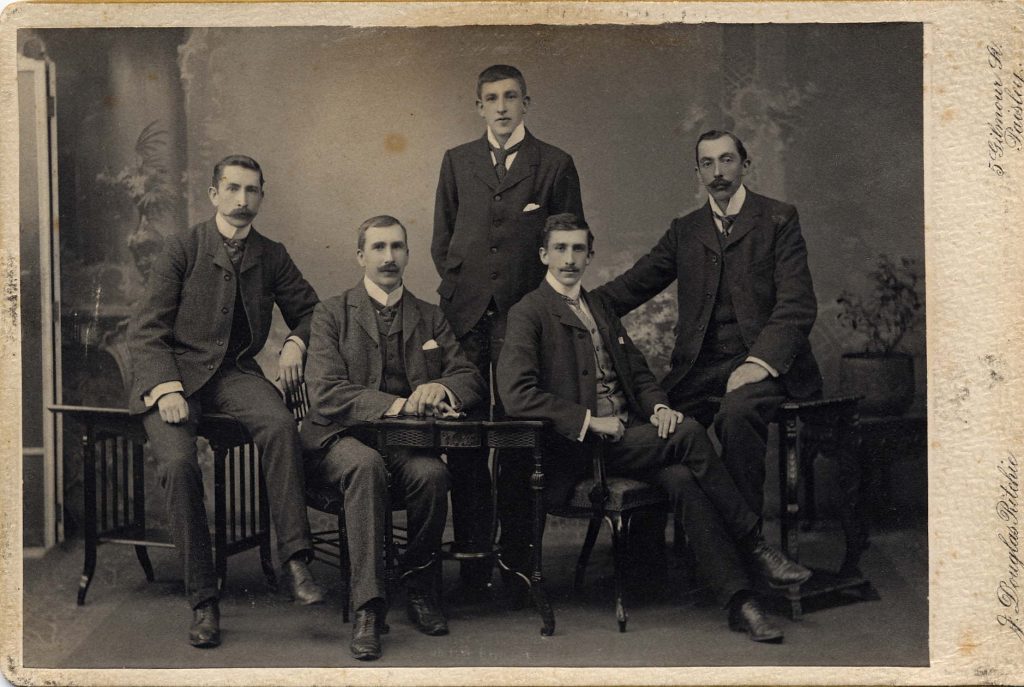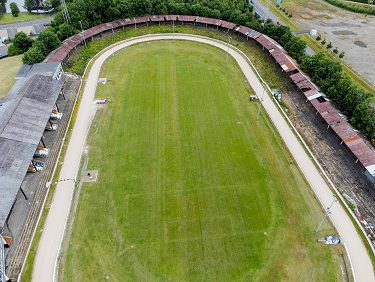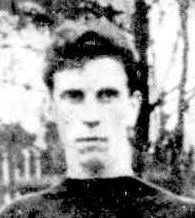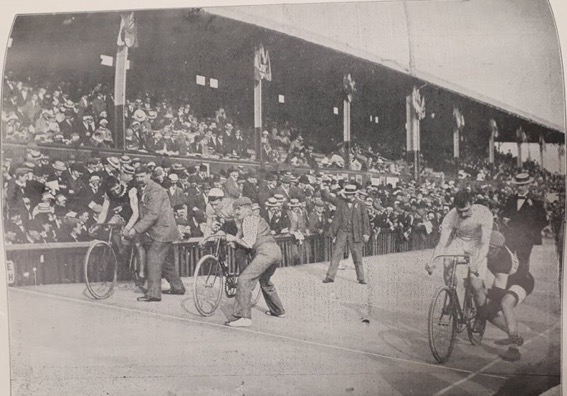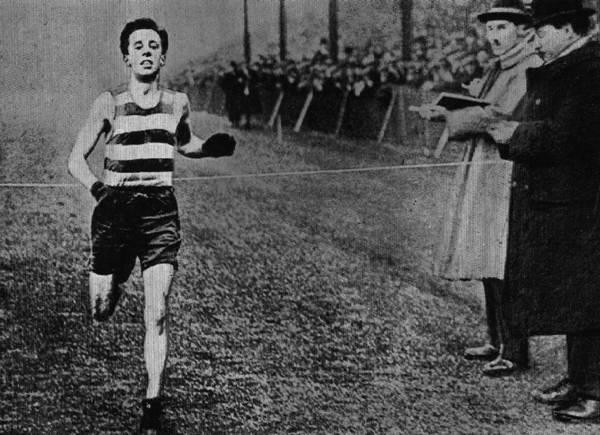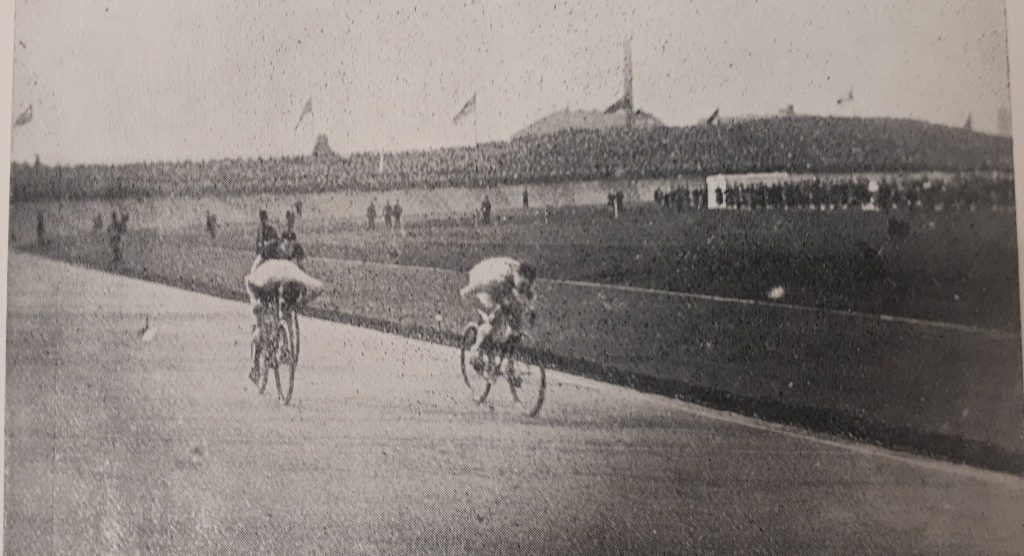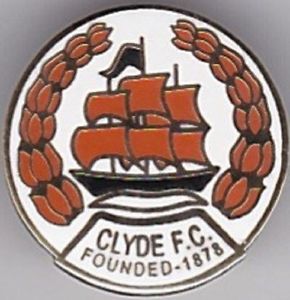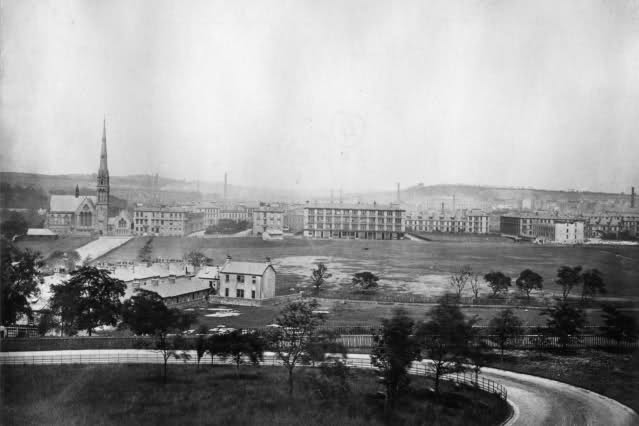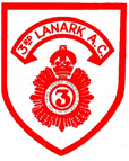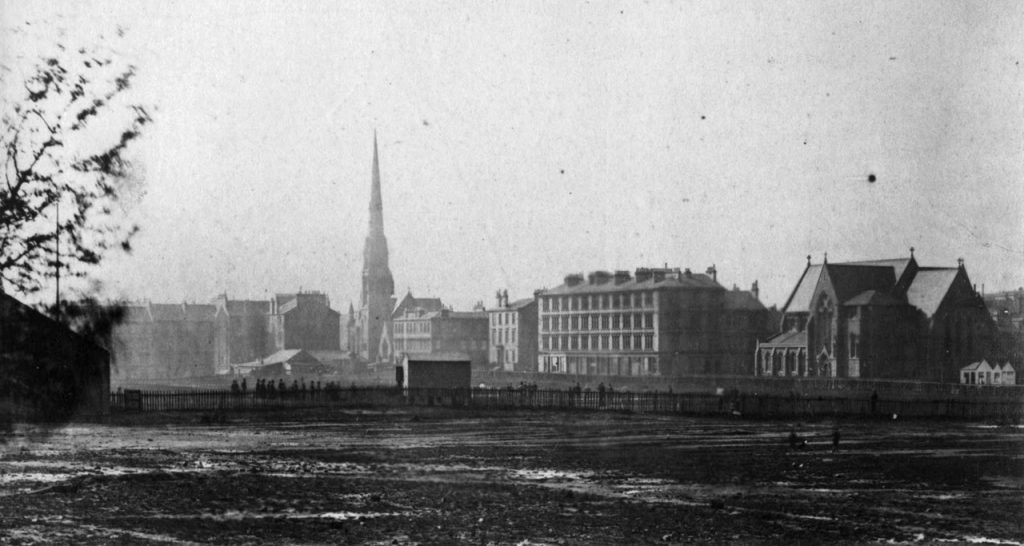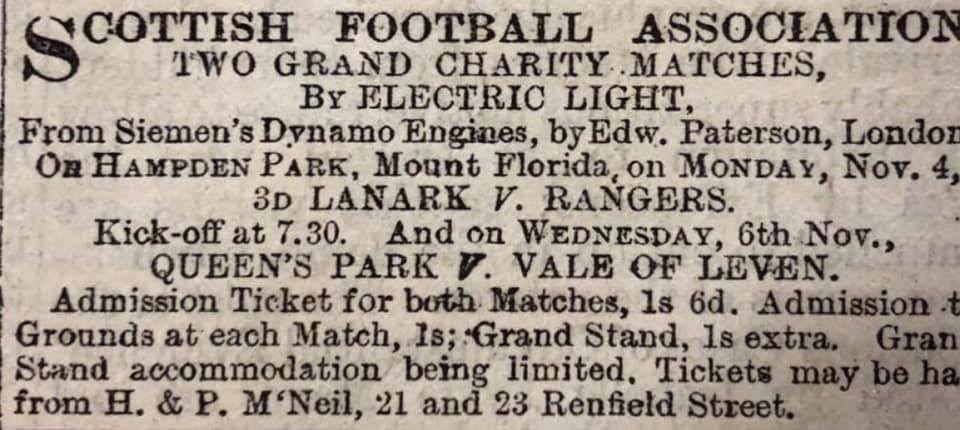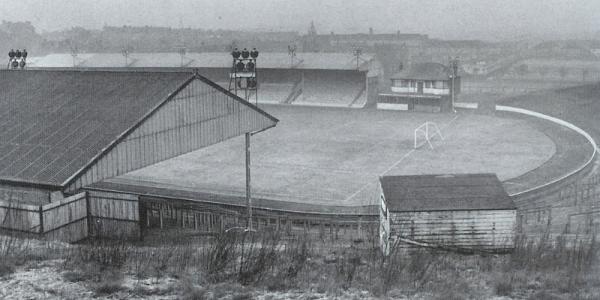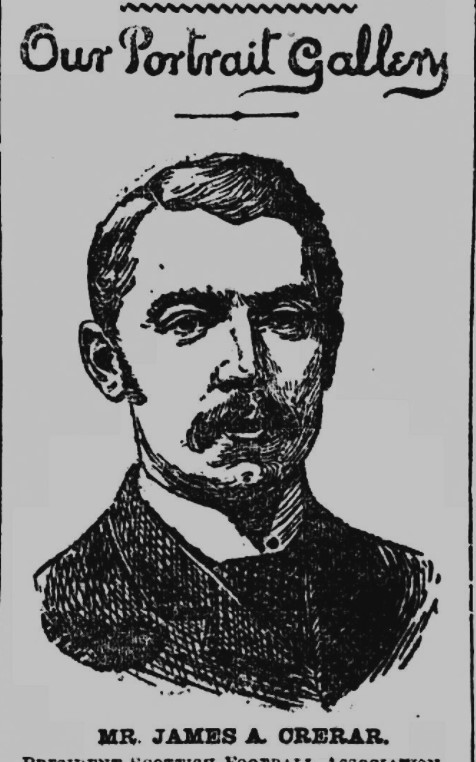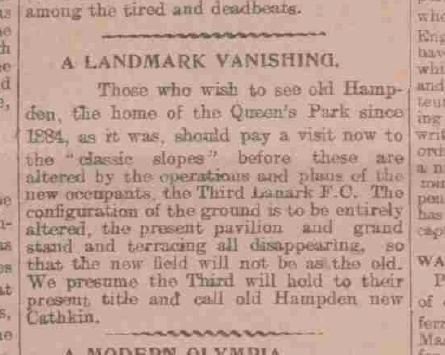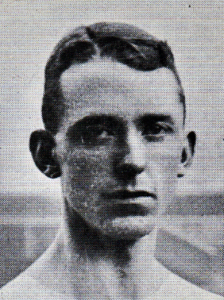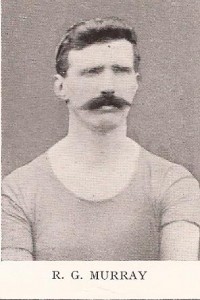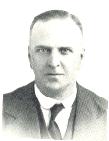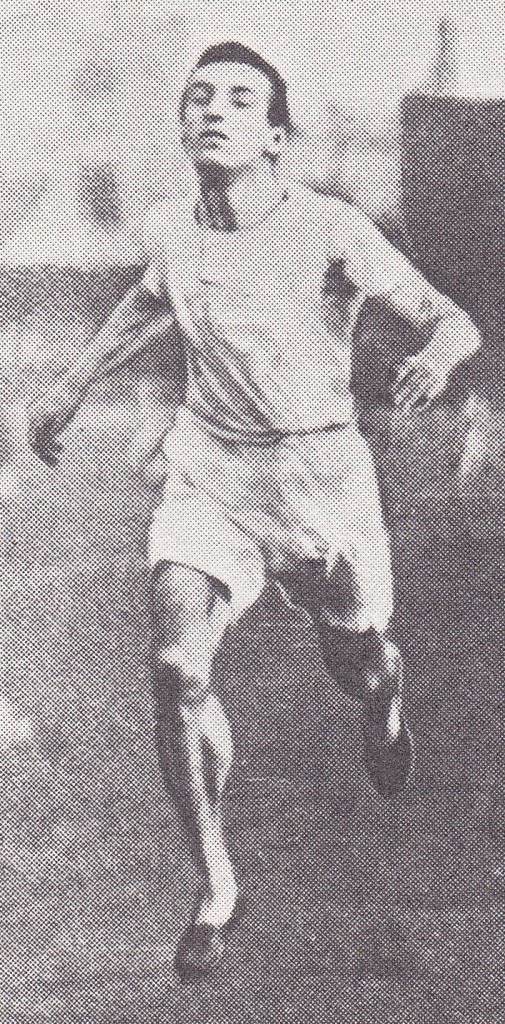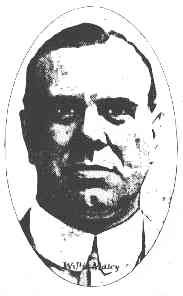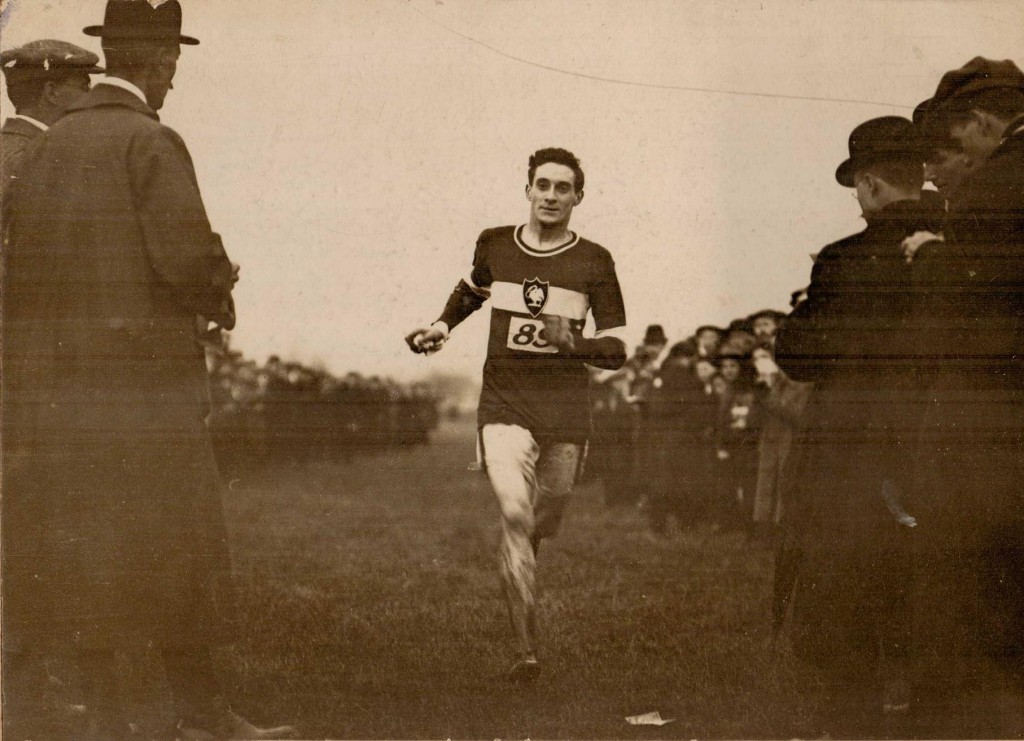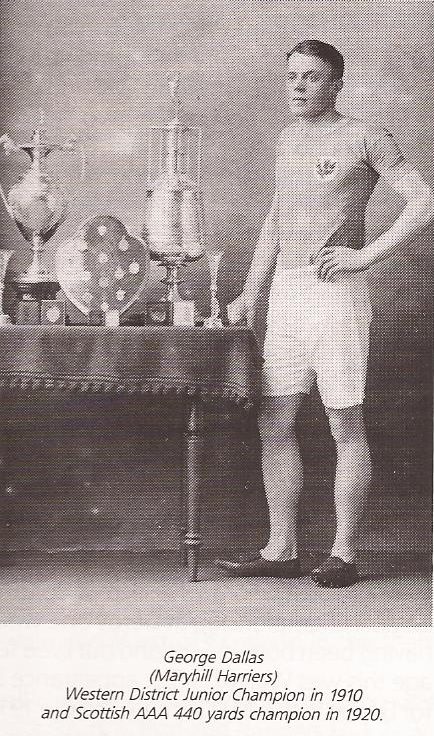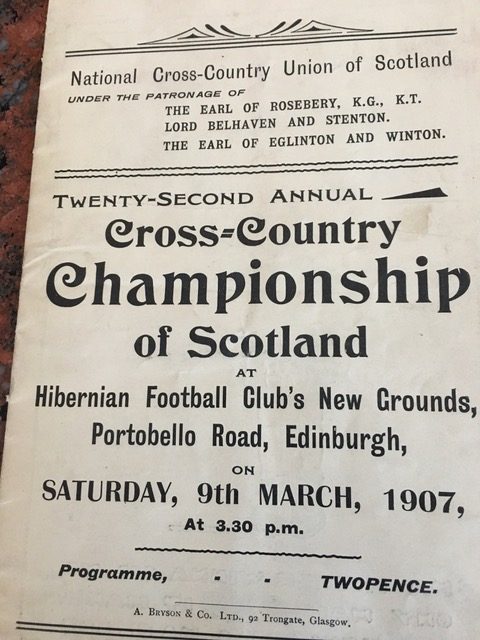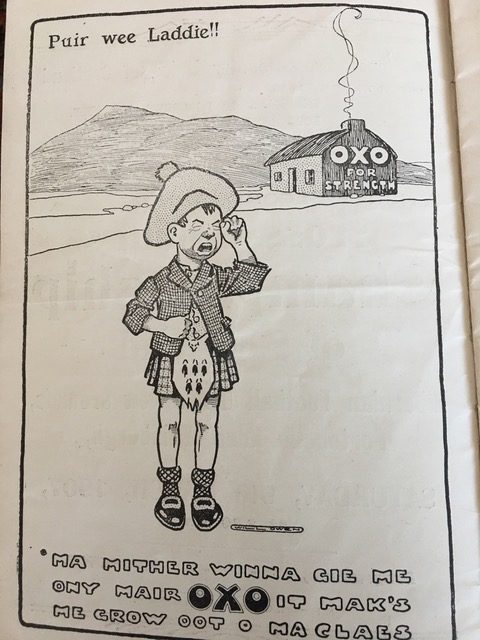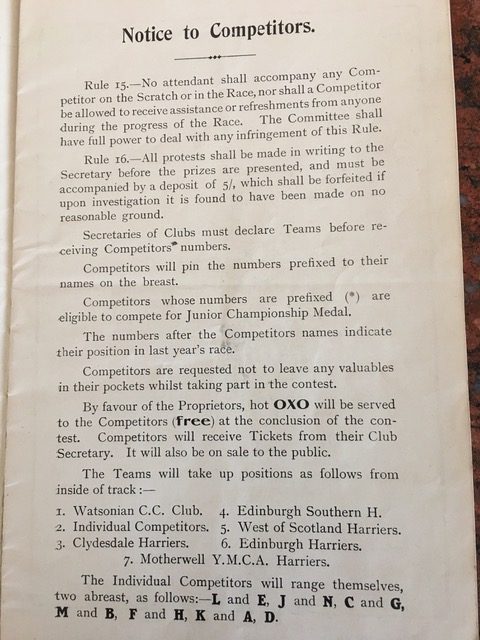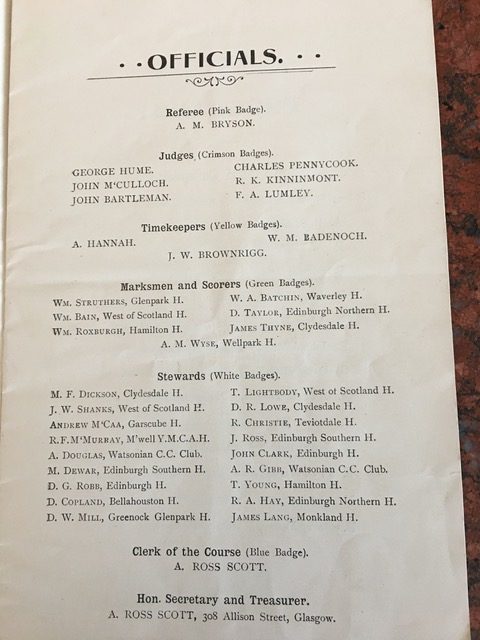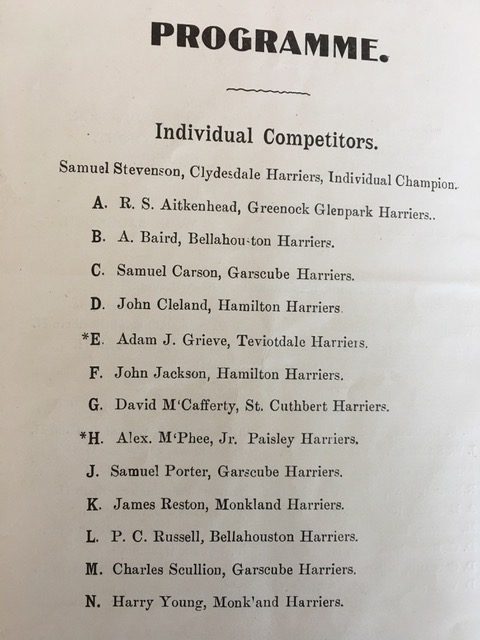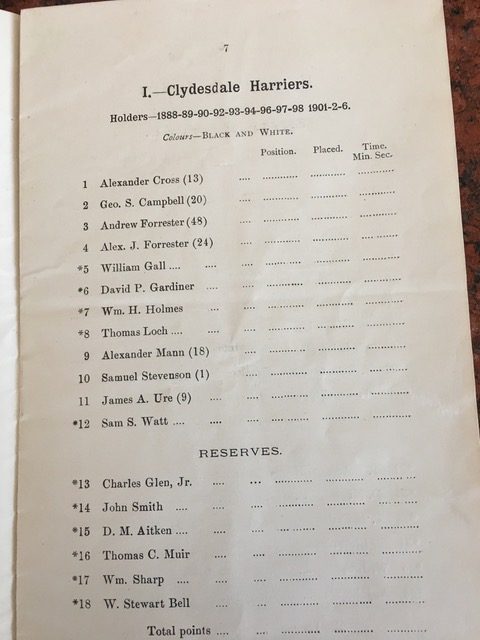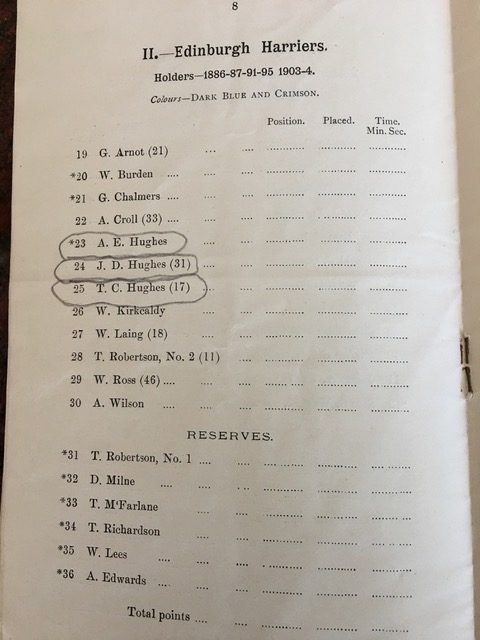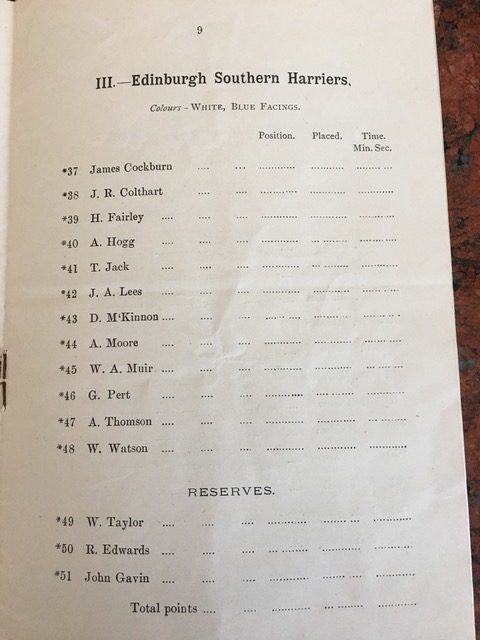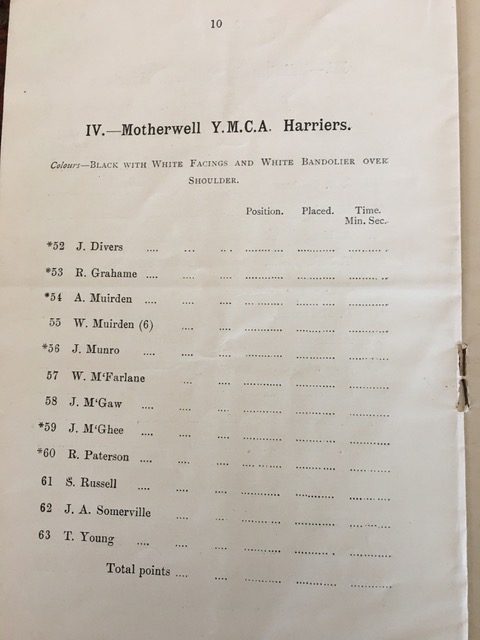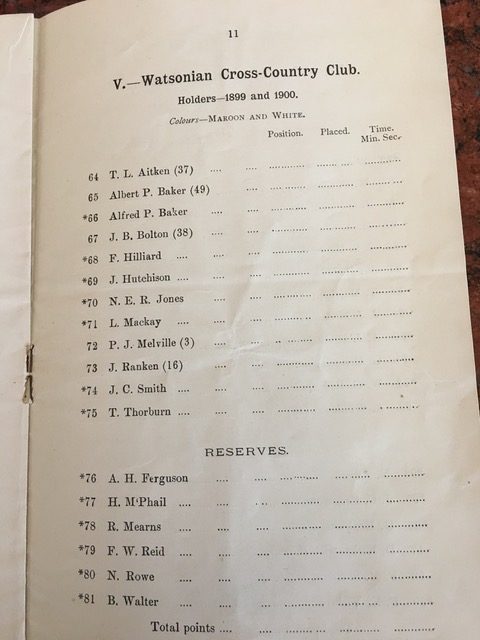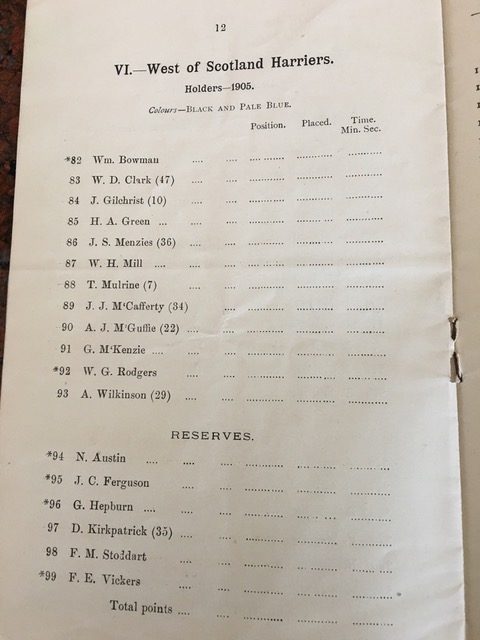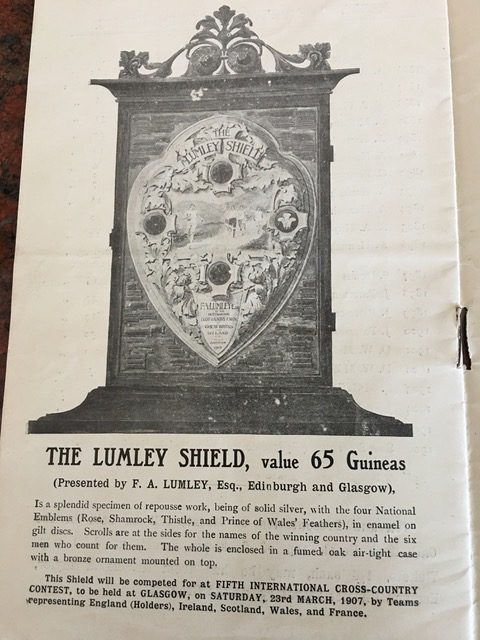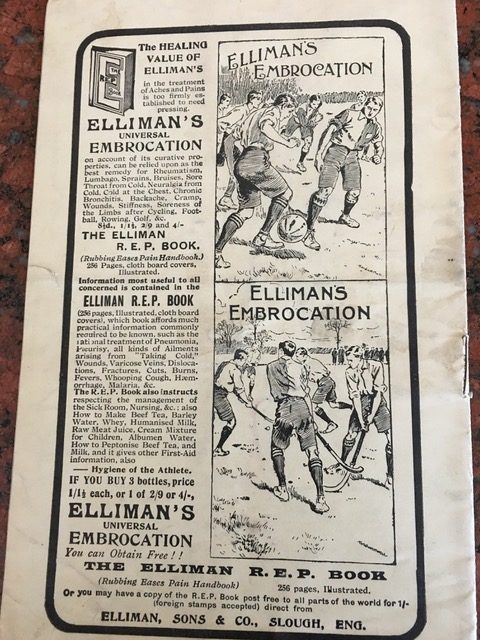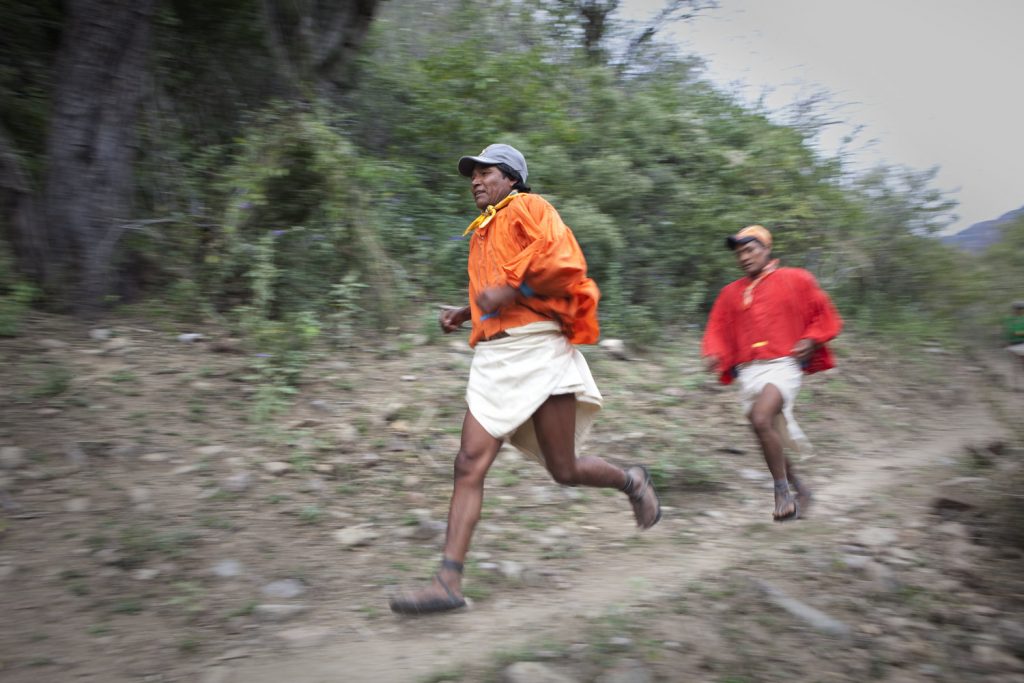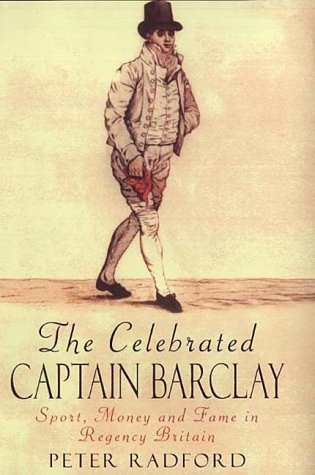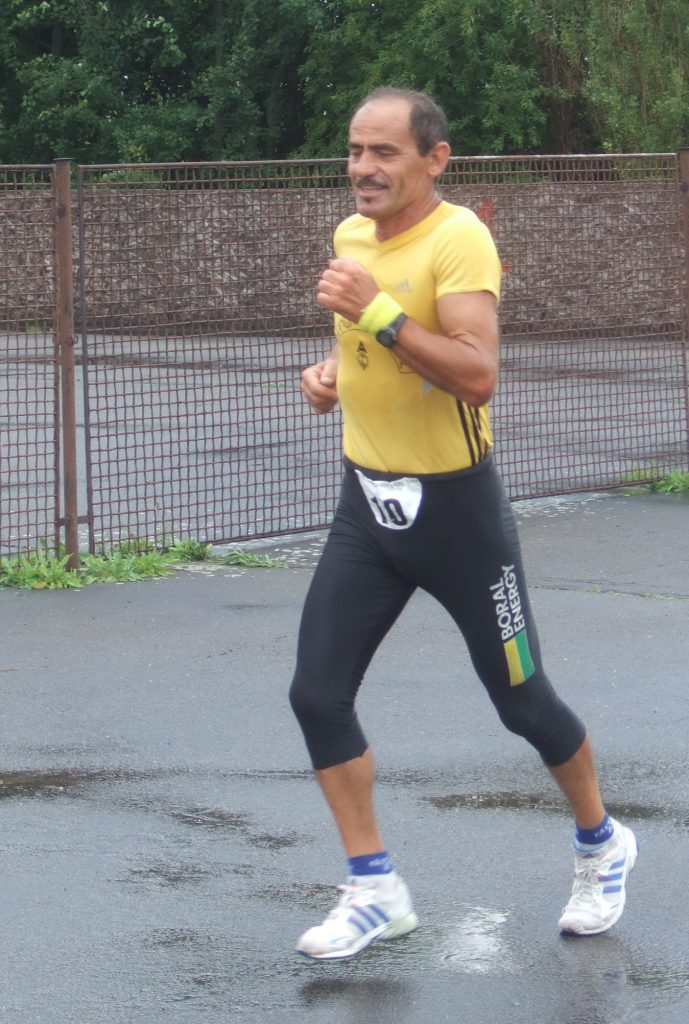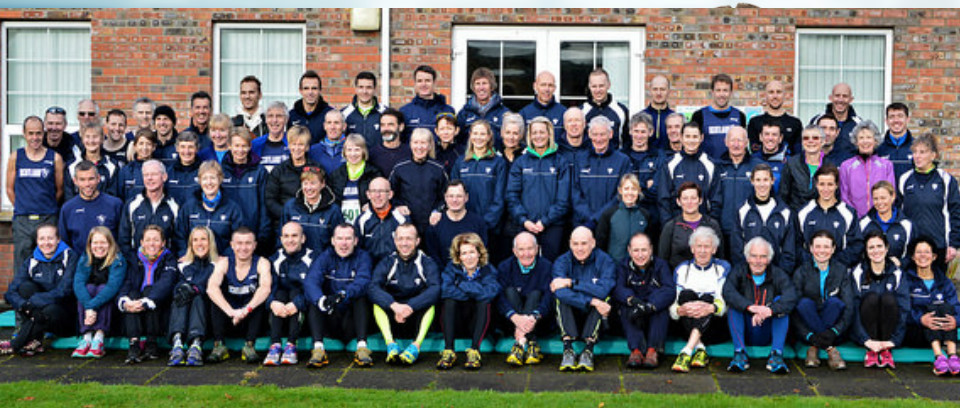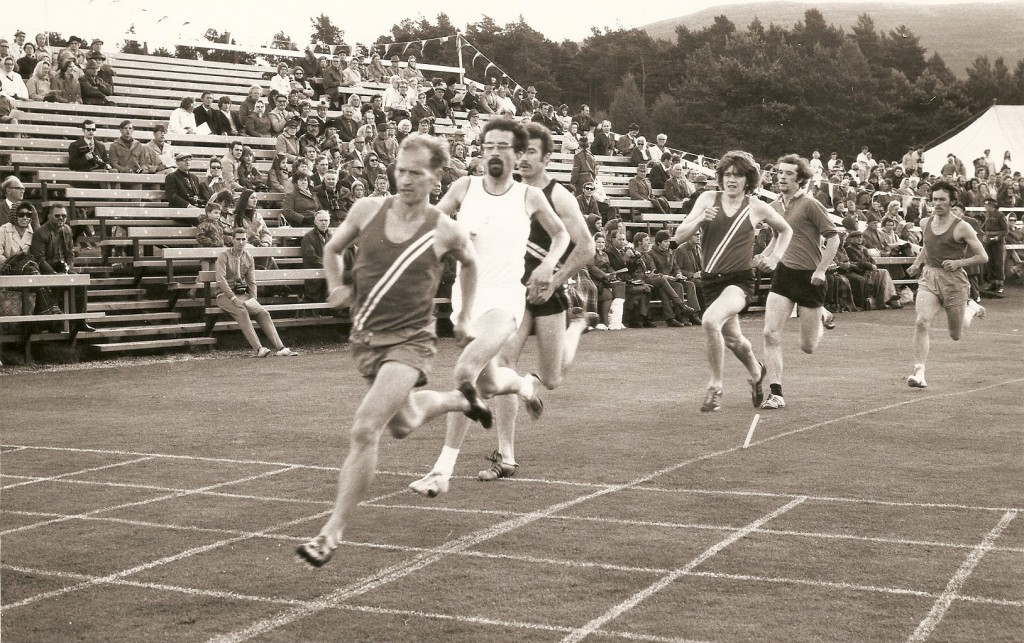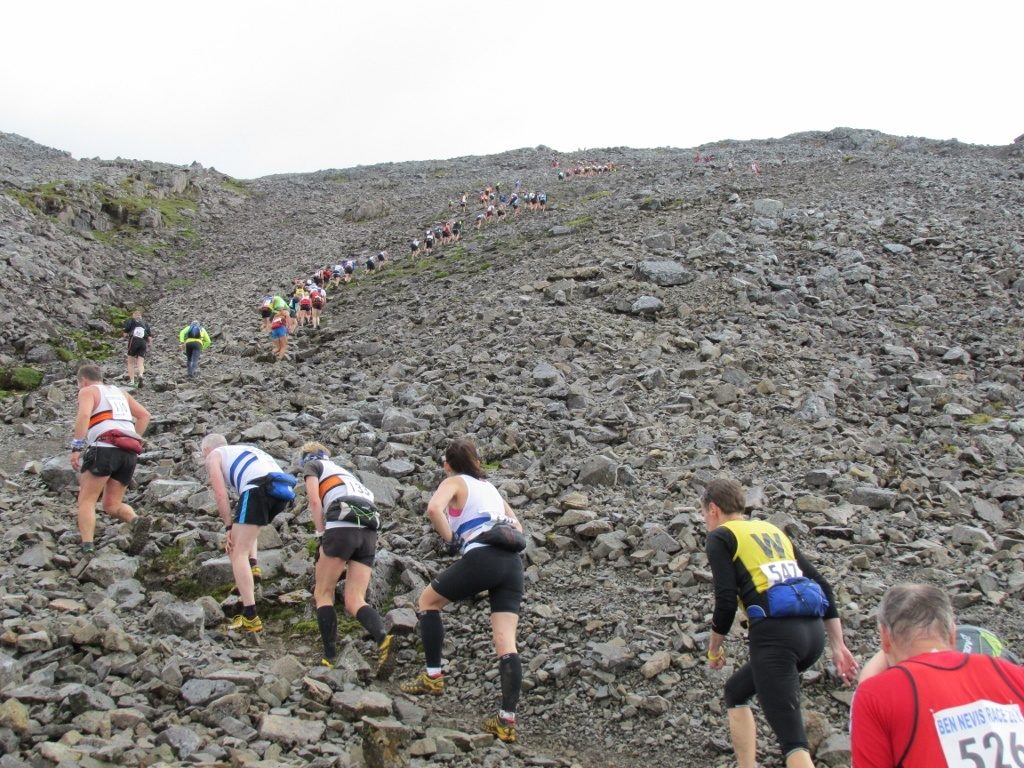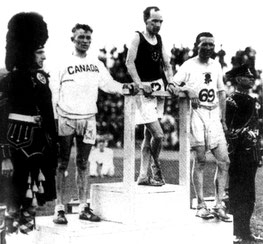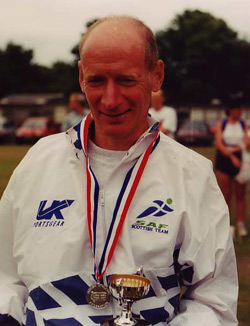Mr JOHN MELLISH.
From ‘The Scottish Referee’, 3rd June, 1895:
“Rangers, we understand, have resigned their membership of the SAAA. This step has been forced on the club by the fact of their declaration to adhere to the new Union, and the other fact that under its auspices the club run a sports meeting on Wednesday evening. To run such a meeting and still retain the membership with the SAAA would have rendered the Rangers liable to be dealt with afterwards, hence the resignation. This is, we believe, the first of the withdrawals received by the SAAA officials, and we believe that Rangers have had official acceptance of their resignation sent to them.”
There is need of a little sporting history here. Clydesdale Harriers was the biggest and most powerful athletics club in the country at this point and as is usual, big clubs attract criticism. This is true whatever the sport but in this case the governing body were taking steps to ‘clip its wings.’ The club had ‘sections’ across the country – five semi autonomous sections in Glasgow alone plus Dunbartonshire, Renfrewshire, Lanarkshire and Ayrshire. In addition they had members from outwith these areas attached to the nearest section. The first dispute in 1888 was because the SCCA wanted to (a) ban clubs from having sections at all – a direct assault on the only club to have such; and (b) rule that runners in championships had to have done at least ten training runs from the club headquarters during that season. With members in Stirling and other outlying centres who could not get to any of the HQ’s it was again aimed at CH. The Harriers broke away, set up the Scottish Harriers Union and ran rival championships and races and before long the dispute was resolved and among the chief negotiators for Clydesdale was John Mellish: described as ‘one of those who had brought the club to its resent high pitch of excellence’ by the Scottish Referee, a former pupil of Glasgow Academy, a member of the 1st LRV and secretary of a Scottish MP at Westminster, in 1889 he ‘permitted himself to be nominated as President of Rangers.’ There were many links between the two clubs.
In the club handbook of 1895/96 we note the following: “It has been thought advisable to sever our connection with the SAAA, and become affiliated with the SAAU, a new body which has come into being owing to the strained relations existing between the SAAA and the SCU.” The SCU was the national cycling body and there had been continuing disputes between them and the SAAA on the definition of professionalism in the sport. Clydesdale had members from a whole range of sports – cycling, swimming, skating, boxing, cricket and football – and were standing up for their own members. The CH then split from the SAAA and set up the Scottish Amateur Athletic Union.
The link with the Rangers led to the club allying itself with the Harriers and joining up with the SAAU whose rules were slightly different to those of the SAAA, and they had separate championships. That’s the background to the comments about the new Union and their leaving of the SAAA. The same issue of the ‘Referee’ (3 June, 1985) made the following comment:
“To get up a meeting in six short days may be taken as a fine example of smartness. Rangers have undertaken this and we do not believe that their enterprise will meet with disappointment. The committee, with Mr GP Hourston at its head, are gentlemen versed in the running of sports; an excellent management involves an excellent meeting. The entries, even on such short notice, are numerous and admirable in quality. Vogt, McLaren and Kyllacky will mount in the B class, and in the A Simpson and all the best men will be up. The foot racing will see all the Western “cracks” on the path, and altogether a good evening’s sport is promised. Rangers make their debut under the new Union, and as this is the first departure of the kind in the West on the part of one of the SAAA’s former adherents, the novelty of their position may help the attendance.”
Although this was not the club’s annual sports meeting, its significance for domestic athletics is hard to overestimate, whatever the outcome of the meeting. The ‘Glasgow Herald’ of Thursday 6th June reported: “RANGERS FOOTBALL CLUB. This club held an amateur athletic and cycling meeting at Ibrox Park, Govan, last night under SAAU and SCU rules. About 2000 spectators attended. ” Events and winners are noted:
100 yards: 8 Heats, three semi finals, final: G Browning 10 4-5th secs.
One Mile Flat Race: W Robertson 4:33.6
Half Mile cycle race:R Crawford 1:09.6
One Mile Bicycle Race: AH Duncan 2:25.6
Five Miles Bicycle Race: W Robin. NTG
It was on then to the Annual Sports in August. The officials on the day included J Mellish as a judge, and G Hourston as clerk of the course. The report in the Glasgow Herald’ simply said: “The annual amateur athletic meeting under the rules of the SAAU and SCU took place at Ibrox Park, Govan, on Saturday afternoon. Fully 7000 spectators were present. ”
There were 10 heats and two semis of the 100 with the eventual winner being D Cram of Rangers in 10 4-5th seconds. He took the lead at 25 yards and won going away. Cram had been a regular finalist in the sprints over the years but this was his first major win. The 300 yards was won by Auld of Ayr FC. A 1000 yards was won by L Ropner (Clydesdale) in 2:20.2 The Mile was won by Robertson of Clydesdale from scratch in 4:38.4 in what was described as a magnificent race. There was also a two miles in which, after Duffus and Hannah dropped out, H Yuill, Wishaw, won from 120 yards in 9:41.0. In this race there were 23 starters but only 3 finishers in the event.
“A glorious and pronounced success! Augury successfully defied! Enterprise rewarded! These and such like terms as these describe the Rangers revels at Ibrox. It is not gush but fact to say that these were the best sports of the season, and it remains for the Celts to show whether or not they can excel them. Unfortunately champion Maley was elsewhere, so that Auld Ayr and Clyde Wilson were robbed of the chance of showing him the way to the tape. Neither of these two cracks were placed in the final which went to Barclay, three and a half yards. ” That was the comment in the ‘Scottish Referee’ the Monday after the Sports of 1896. The Sports in 1896 was on 3rd August.
There had been two national championships in 1895 and again in 1896. In the 1896 SAAU championships at Hampden on 27th June, Willie Maley won the 100 yards in 11 seconds. (The previous year it had been won by Wilson of Clyde in 10.8 at the same venue). Remembering that there were seldom any field events at SAAU meetings, other athletic events at Ibrox in August, 1886, included
100 yards won by G Barclay (KNH)10.6 sec
Half Mile: J Quinn (Ayr FC) 2:00.2 (off 40 yards)
One Mile: J Barclay (WSH) 4:24 (Fine race with Jackson of Rangers FC)
Three Miles: Lamb from Duffus.
Meanwhile, in Stirlingshire, , “Secretary W Maley was at Brig’ o Allan negotiating talent for the 15th while AS Maley busied himself at a meeting in the ring at Ibrox booking entrants for Saturday 1st.” Who was competing in the professional Games at Bridge of Allan? Alf Downer for one and Gideon Perrie who was born in Lanarkshire but living in America and was the American professional champion for the shot, hammer and ‘other heavy events’.
Alf Downer, Scottish Pelicans
Negotiations had been going on between the SAAA and the SAAU over the weeks and months since the split and agreement between the two was reached in the SFA Rooms at Carlton Place in Glasgow on 23rd April, 1897. New laws and rules were issued defining what was an ‘amateur’ as had been accepted in Leeds in February 1896 between AAA, SAAA, and Irish AAA. Summer 1987 saw the two factions again competing under the single umbrella of the SAAA. The SAAU cause was probably helped by the fact that the major clubs in athletics and football were united in opposition to the SAAA.
The Rangers Sports in 1897 were held on 7th August and the Scottish Referee of 9th August again sang the praises loud and clear:
“RANGERS REJOICE” was the headline, followed by “Scotia’s darling club never had a more successful or pleasurable meeting than that of Saturday. In fact we take leave to say that it was by far the smartest and most interesting sports meeting of the season. There were no crawls and no crawlers, whilst spills and spillers were very few. Not in one but in every event the pursuits to the tape were fast and the finishes close, dead heats occurring in the 100 yards, whilst an almost unparalleled circumstance took place in the Mile flat between Mills and Duffus, the pair actually dead heating. The Committee, headed by JR Gow, deserves great praise for their management, and we expect tonight’s continuation meeting, under their supervision to be even more interesting and enjoyable, especially as football occupies a place on the programme. A word of commendation is due handicappers Hannah and Livingston, for the cycling and foot races were equally good.”
The Glasgow Herald’ of the same date read: “Since the season started no more pleasant athletic function has taken place than that held under the auspices of the Rangers at Ibrox Park, Govan, on Saturday. The weather was all that could be desired, , the heat of the sun being tempered by a fairly strong breeze, which told against good times being done. Fully 14000 spectators were present and they were entertained with a splendid afternoon’s sport. The bands of the Argyll & Sutherland Highlanders and Govan Police played selections, while a detachment of men from the above regiment gave an exhibition of musical drill and a military field display. Everything was run up to time and at the close Miss Caldwell presented the prizes to the successful competitors.”
What of the competition, then? First off, there were more officials listed than at any of the previous Sports and they included W Maley (not off at Bridge of Allan this year), W Sellar, JR Gow, W Wilton, DS Duncan and A Hannah. The 100 yards resulted in a win for JS Muir of QPFC, off 4 yards, by a foot; Half Mile: J Jeffrey (Irvine AC 55 yards) won; in the One Mile, DW Mill of Greenock Glenpark Harriers 60 yards) looked like winning it until Duffus (Clydesdale 55) came through strongly to make a dead-heat of the race: Mill would join Clydesdale and win the SCCU championships twice at the turn of the century); an there were also bicycle races for professionals and also for amateurs. The competition was continued on the following Monday evening.
On Monday, 9th August, 1897, there was what was termed the continuation of the sports but the programme contained a senior 5-)a-side tournament (featuring Rangers, Third Lanark, Hearts, and Hibernian), a Junior 5-a-sides (with Strathclyde, Parkhead, Cambuslang Hibernians and Glasgow Perthshire) and a 220 yards confined to registered professional football players. With four heats and a final it was won by Tom Hyslop (Rangers FC – 5 yards) from Andrew Holms (Renton – scratch) and N Smyth (Rangers – 9 yards) in 24.0 seconds. Held on a pleasant sunny evening, it was watched by a crowd of 5000 spectators.
DS Duncan
The following year’s Sports were held on 6th August, and the Glasgow Herald on 8th August, 1898 published the details prefaced only by, “The gathering on Ibrox Park on Saturday afternoon was a successful one in respect of good racing, fine finishes and splendid management.” It was certainly well supported by the athletes – 20 heats in the 100 yards plus four semi finals and a final equalled 25 races over 100 yards in one afternoon. It was won by McLean of QPFC from Wardrop of QPFC in 10 seconds. The One Mile with an 80 yard limited handicap was won by TP Robertson (no club given) from R Brown (BH) in 4:20.4. The next race was the 120 yards invitation handicap won by Grant (CH – 5 yards) from PJ Kerley (MHFC) 1 1/2) in 12 seconds; Kerley then won the 220 yards handicap and in the half-mile A Morris defeated A McDonald (CH) in 1:58.4. There were also cycle races. both amateur and professional.
‘The Scottish Referee, 8th August, 1898, was a bit more eloquent: “Ye gallant Light Blues are to be congratulated on the success of their sports on Saturday. Favoured with a continuance of brilliant weather, tempered by a cooling breeze, competitors and spectators were in fine humour. A shadow hovered over the scene owing to the death of Dr John McLeod, the flags being lowered to half mast in respectful sympathy. … the raucous shouts of the ‘bookies’ of whom a numerous company were present. Beginning with the sprint, which was run off on the turf in front of the grand stand, the meeting proceeded with a smartness and despatch that made the sport most interesting and enjoyable, and secured for the meeting the verdict of being one of the best in the Rangers history and of the season. “
The paper went on to comment on the individual events but the extract above indicates the success of another meeting. The weather was not good on Monday night for what was now being called the Rangers tournament but before that started there was a One Mile handicap won by J Dickson (Edinburgh – 75 yards) from J Darwin (East Calder) and J Revell (Galashiels). As for the football, the rainy weather had made the ground wet and boggy and did not lend itself to scientific football, but what it lacked in science, it made up for in spirit. St Mirren won defeating Hibernian by one goal to two points.
Not finding a report on the Sports in August 1899 in either the Referee or the Herald, it may be that there were none that year. Note the following:
“Rangers, notwithstanding they are hurrying up the contractors for newer and greater Ibrox with all speed, find that they will have to draw upon the fields of their friends for a few weeks at the start of the season. Anxious to help each other in a time of difficulty, we are pleased to learn that the clubs have readily complied with the Rangers demand, and will accommodate them with dates until such time as Ibrox is ready for occupancy. Rangers patrons will bear with them in their little difficulty and turn out generously when the club is away, so as to compensate the clubs who are obliging the “Light Blues.”
The Scottish Referee, 7th August 1899
